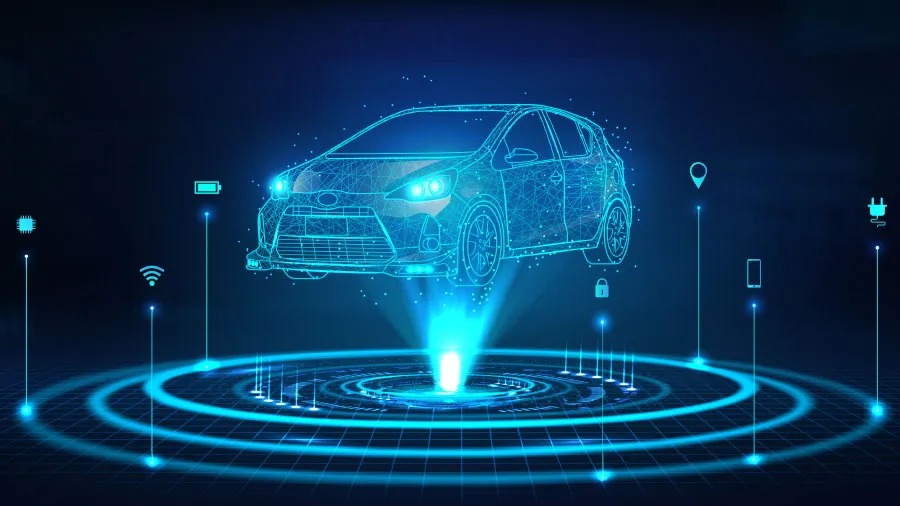India–US Trade Tensions Rise Over Steel and Auto Tariffs NMDC Limited reports a 38% drop in Q4 FY24 consolidated net profit RINL to Raise $23 Million Through Land Sales Amid Crisis

In a turning point for India's automotive industry, two major auto component manufacturers have reached a critical milestone, signalling the start of a new era under the government's ambitious Production-Linked Incentive (PLI) scheme. Sona Comstar and Toyota Kirloskar Auto Parts have emerged as market leaders, obtaining eligibility certifications for innovative electric vehicle (EV) components, beginning a new era in the country's automotive industry.
The pathway to this milestone has been filled with difficulties, reflecting the rich tapestry that defines India's manufacturing sector. Delays, particularly caused by the difficult process of auditor certifications for domestic value addition (DVA) at tier-II and tier-III vendors, highlight the complexities of implementing such a large system. However, with both companies achieving the strict 50% DVA standards, the way to realise the PLI scheme's promise has been revealed, promising a boom in innovation and competition in the auto parts industry.
Sona Comstar, renowned for its prowess in supplying EV parts to global automakers, has secured certification for its hub-wheel drive motors for e-two-wheelers, signalling its commitment to driving the transition towards sustainable mobility. Likewise, Toyota Kirloskar Auto Parts has been lauded for its e-trans axles, exemplifying the industry's collective endeavour towards embracing advanced automotive technologies.
The significance of these certifications extends far beyond mere regulatory compliance; they symbolise a paradigm shift towards a future characterised by innovation, sustainability, and global competitiveness. By positioning themselves as trailblazers within the PLI framework, Sona Comstar and Toyota Kirloskar Auto Parts have set a precedent for their peers, inspiring a wave of optimism and renewed vigour within the industry.
However, while the attainment of eligibility certifications marks a pivotal milestone, it also serves as a reminder of the challenges that lie ahead. Industry executives caution that companies newly certified for DVA may encounter hurdles in availing incentives before fiscal year 2026, particularly if the government opts for quarterly settlements. The inherent complexities of aligning incentives with industry dynamics necessitate a nuanced approach, one that balances regulatory imperatives with the imperatives of fostering innovation and competitiveness.
The road to realising PLI incentives is paved with incremental sales revenue targets, serving as a litmus test for companies' resilience and adaptability in an increasingly competitive landscape. With incentives ranging from 13-18% for EV parts and 8-13% for non-EV parts, the stakes are high, necessitating a strategic recalibration of business models and operational frameworks.
Analysts predict that PLI claims from original equipment manufacturers (OEMs) and component makers are poised to surpass the government's allocated budget for the scheme. With a modest estimation of EV adoption in India, projections suggest that the budgetary allocation may cover only a fraction of the anticipated claims, underscoring the need for a concerted effort to align fiscal imperatives with industry aspirations.
The onus, therefore, lies on companies to fortify their business strategies beyond reliance on PLI payouts. While the incentives catalyse growth and innovation, they must be viewed within the broader context of a rapidly evolving automotive landscape. Strategic investments in research and development, technology adoption, and skill enhancement are imperative to harnessing the full potential of the PLI scheme and propelling India's auto component sector to new heights of excellence.
For Sona Comstar, the journey towards unlocking PLI incentives represents a transformative opportunity to bolster its competitive edge and consolidate its position as a global leader in EV component manufacturing. With several products in the DVA approval pipeline, including mid-mount traction motors and electronic differential locks (EDL), the company is poised to leverage incentives to drive innovation and expand its market footprint.
While the exact payout remains uncertain, Sona Comstar views PLI as a strategic lever for enhancing competitiveness, both domestically and internationally. By channelling incentives towards strategic initiatives such as product innovation, technology adoption, and market expansion, the company aims to solidify its position as a key player in the burgeoning EV ecosystem.
Contrary to expectations of margin expansion, industry observers foresee OEMs leveraging PLI incentives to stimulate market growth and drive demand for advanced automotive technologies. Tata Motors, Mahindra & Mahindra, and key suppliers like Sona Comstar are positioned as primary beneficiaries, poised to capitalize on the transformative potential of the PLI scheme.
Tata Motors, in particular, views PLI as a crucial funding source for advancing its EV business, underscoring the pivotal role of incentives in driving industry transformation. As the automotive sector embarks on a journey of evolution and innovation, the PLI scheme emerges as a linchpin for catalysing growth and fostering a culture of excellence within the industry.
In conclusion, the attainment of eligibility certifications by Sona Comstar and Toyota Kirloskar Auto Parts represents a watershed moment in India's automotive journey, signalling the onset of a new era characterised by innovation, sustainability, and global competitiveness. As the industry embraces the transformative potential of the PLI scheme, it must navigate the complexities inherent in operationalising incentives while remaining steadfast in its commitment to driving growth, innovation, and excellence.
Also Read : JSW Group to revolutionise Indian EV market with affordable, high-quality electric vehicles Decoding China's EV triumph: Lessons for India and the impact on steel demand and the role of metals in EVs